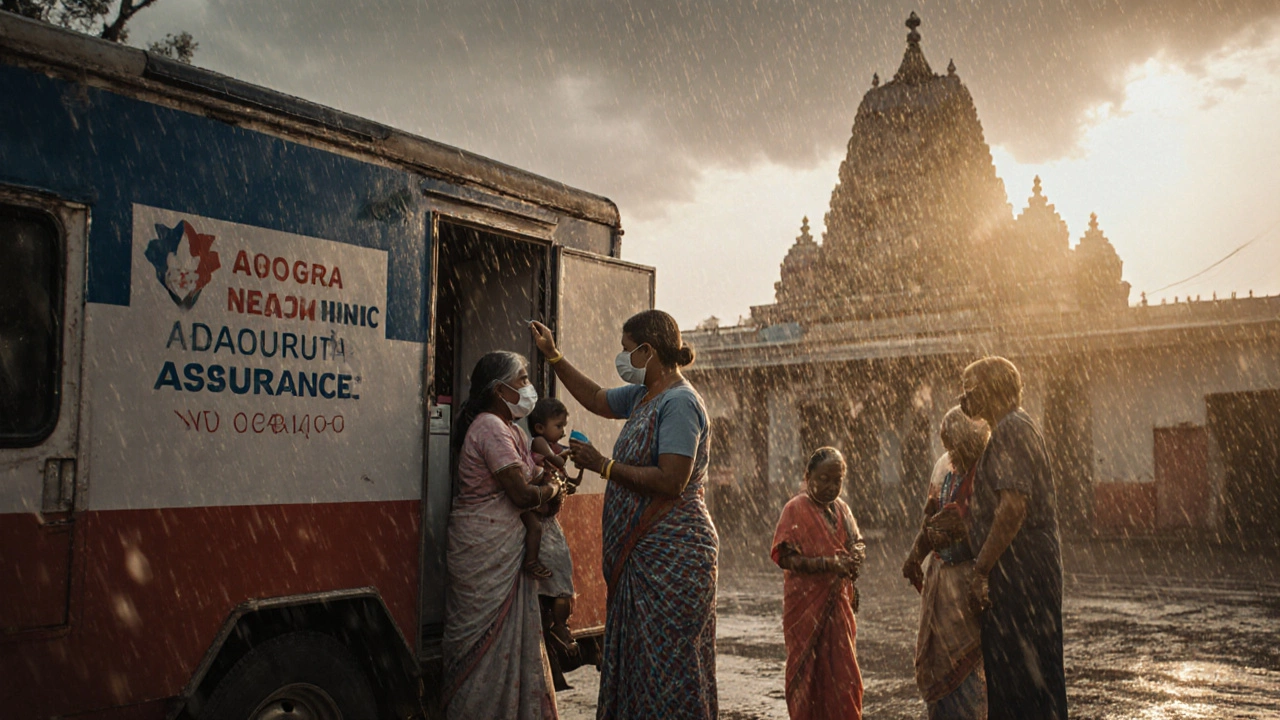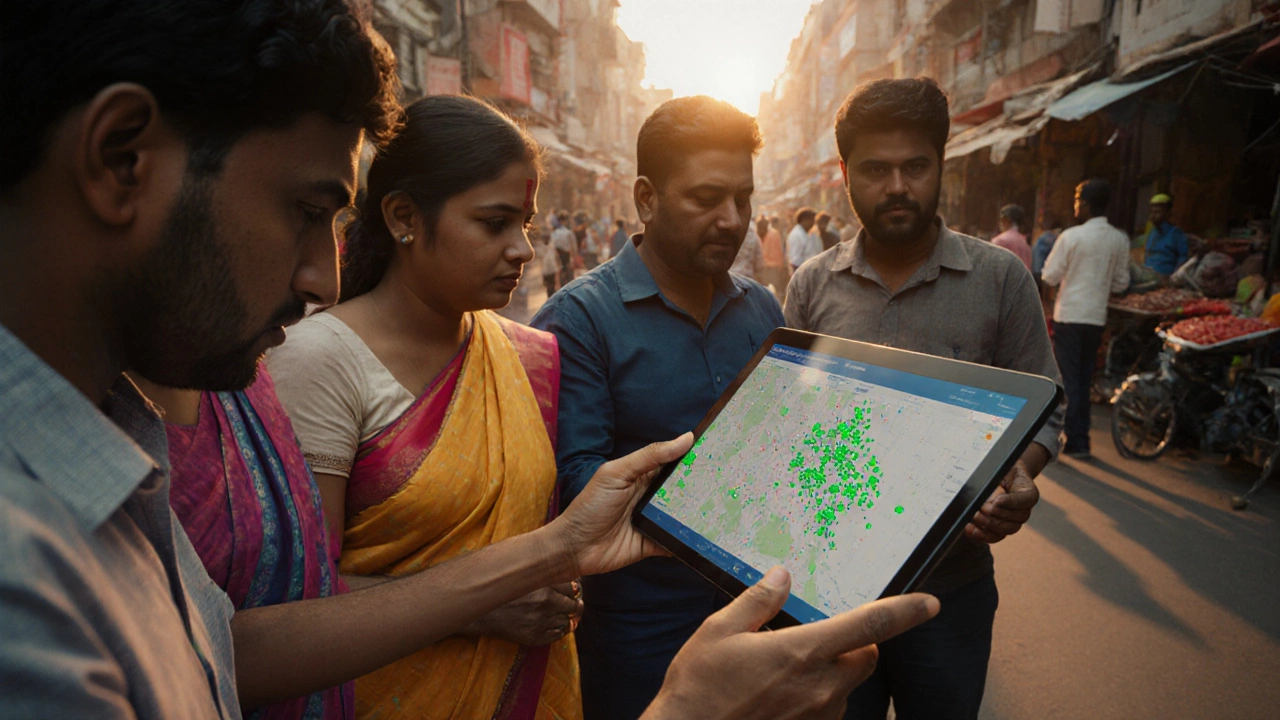Public health isn’t about treating one sick person at a time. It’s about keeping entire communities healthy before anyone even gets sick. Think of it like fixing a leaky roof before the rain comes. You don’t wait for the whole house to flood. In the same way, public health works behind the scenes to stop outbreaks, clean up water, teach good nutrition, and make sure vaccines reach everyone. But what exactly does it do? There are three core functions that hold up every public health system around the world - and they’re the same whether you’re in Bangalore, New York, or Nairobi.
Assessment: Knowing What’s Happening in the Community
Before you can fix a problem, you need to know it exists. That’s what assessment is all about. Public health teams collect data - not just from hospitals, but from schools, pharmacies, waste systems, even social media trends. They track how many people get the flu each winter, where asthma is most common, how many kids are overweight, or if lead levels in drinking water are rising.
In India, this means monitoring dengue outbreaks in monsoon season, tracking TB cases in crowded urban slums, or checking if pregnant women in rural areas are getting enough iron. The data doesn’t just sit in a report. It gets turned into maps, alerts, and action plans. When a spike in diarrhea cases shows up in a village near Mysore, public health workers don’t guess why. They test the water, interview families, and find out if a new well is contaminated. That’s assessment in action.
Without this step, you’re flying blind. You might spend money on the wrong thing - like handing out hand sanitizers when the real issue is unsafe sewage. Assessment turns guesswork into facts.
Policy Development: Turning Facts Into Rules That Protect People
Knowing something is wrong isn’t enough. You need to change it. That’s where policy development comes in. Public health experts work with local governments, schools, and businesses to create rules, programs, and laws that make healthy choices easier and dangerous ones harder.
Think about smoking. In the 1990s, people smoked everywhere - in restaurants, buses, even hospitals. Then came policies: no-smoking signs, higher taxes on cigarettes, bans on advertising. The result? Smoking rates in India dropped by nearly 30% over two decades. That didn’t happen because people suddenly changed their minds. It happened because the environment changed.
Other examples? Mandatory fortification of salt with iodine to prevent brain damage in babies. Laws requiring restaurants to display calorie counts. Rules that stop junk food ads from targeting kids on TV. These aren’t just suggestions. They’re enforceable policies built on data from assessment.
Policy development is where science meets society. It’s not always popular. People don’t like being told what to eat or how to drive. But when done right, it saves lives on a massive scale - and it’s one of the most cost-effective tools public health has.
Assurance: Making Sure Everyone Gets the Help They Need
Having a plan isn’t enough. Someone has to carry it out. That’s assurance. This is the part where public health makes sure services actually reach people - especially those who are poor, isolated, or forgotten.
Imagine a policy says every child should get vaccinated. But in a remote village in Odisha, there’s no fridge to store vaccines, no trained staff, and no way to get there on rainy days. Assurance means fixing that. It means sending mobile clinics. Training community health workers. Using WhatsApp reminders. Partnering with local temples or anganwadi centers to reach families.
Assurance also means making sure clean water systems work, that clinics have enough medicine, that mental health counselors are available after a disaster, or that diabetes screenings are offered at local fairs. It’s the gritty, hands-on work of delivery. Without assurance, policies stay on paper. Programs fail. People die.
In cities, assurance might mean running free TB testing in railway stations. In villages, it might mean training grandmothers to recognize signs of malnutrition. It’s not glamorous. But it’s what turns good intentions into real results.
How These Three Work Together
These three functions don’t happen one after another. They spin in a loop, feeding each other.
Let’s say a city sees a rise in diabetes (assessment). Public health officials respond by launching a citywide campaign to reduce sugar in drinks (policy development). Then they work with local vendors to offer low-sugar alternatives and set up free glucose checks at community centers (assurance). A year later, they check the numbers again - are cases going down? If not, they go back to assessment and adjust.
This cycle is what makes public health different from regular healthcare. Doctors treat illness. Public health prevents it. One is a fire truck rushing to a burning house. The other is the city inspector making sure all buildings have fire codes, sprinklers, and escape routes.
Why This Matters Now
In 2025, with climate change worsening air quality, urban overcrowding increasing disease spread, and misinformation spreading faster than viruses, public health has never been more critical. The same three functions still apply - but the stakes are higher.
When a new strain of flu emerges, assessment tracks it in real time. Policy development pushes for mask mandates or school closures. Assurance ensures tests and antivirals reach low-income neighborhoods. When dengue explodes in monsoon season, it’s assessment that spots the hotspots, policy that bans standing water in construction sites, and assurance that sends teams door-to-door to remove mosquito breeding grounds.
And it’s not just about diseases. It’s about food safety, mental health, clean air, safe streets, and even reducing violence. All of it falls under these three pillars.

What Happens When One Function Fails
Think of public health like a three-legged stool. Remove one leg, and it collapses.
If you skip assessment - you’re reacting to crises instead of preventing them. You’ll waste money, panic unnecessarily, and miss early warnings.
If you skip policy - you’ll have great data but no real change. You’ll hand out flyers about healthy eating while fast-food chains flood neighborhoods with ads.
If you skip assurance - you’ll have brilliant plans that never reach the people who need them most. A vaccine sitting in a warehouse isn’t protection. A clean water law that’s not enforced is just words.
Every public health failure - from a preventable outbreak to a rise in childhood obesity - can be traced back to a breakdown in one of these three areas.
What You Can Do
You don’t need to be a doctor or a policymaker to support public health. You can be part of it.
- Get vaccinated - it helps everyone around you.
- Report unsafe food or water to local authorities.
- Support clean air initiatives in your city.
- Ask your local council: "What are we doing about diabetes prevention?"
- Share accurate health info - not rumors.
Public health works best when communities are engaged. Your voice matters. Your actions count.
What are the three core functions of public health?
The three core functions are assessment, policy development, and assurance. Assessment means gathering data on health trends in a community. Policy development means creating rules and programs to improve health. Assurance means making sure those programs actually reach people and work as intended.
Is public health the same as healthcare?
No. Healthcare treats individuals who are already sick - like a doctor giving you medicine for an infection. Public health works to stop people from getting sick in the first place - like making sure water is clean, vaccines are available, and air pollution is controlled. One is reactive; the other is preventive.
Why is assessment so important in public health?
Assessment turns guesses into facts. Without knowing how many people are affected, where outbreaks are happening, or what’s causing a health problem, you can’t fix it. For example, if diabetes is rising in a city, assessment finds out if it’s due to sugary drinks, lack of parks, or poor access to healthy food - and that guides the right solution.
Can public health really prevent diseases?
Absolutely. Vaccines have wiped out smallpox and nearly eliminated polio. Clean water systems cut diarrheal deaths by 80% in many countries. Seatbelt laws saved over 300,000 lives in the U.S. alone since the 1970s. These aren’t theories - they’re proven results from public health action.
What happens if a government ignores public health?
People get sicker, die younger, and healthcare systems get overwhelmed. Outbreaks spread faster. Chronic diseases like diabetes and heart disease rise. Children miss school. Workers lose income. The cost to the economy and human suffering is massive. Countries that invest in public health save money in the long run - and save lives.




